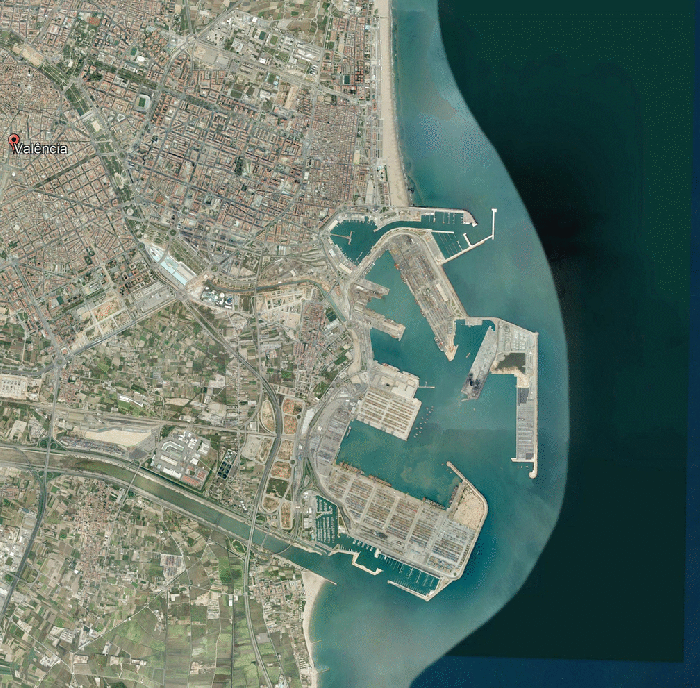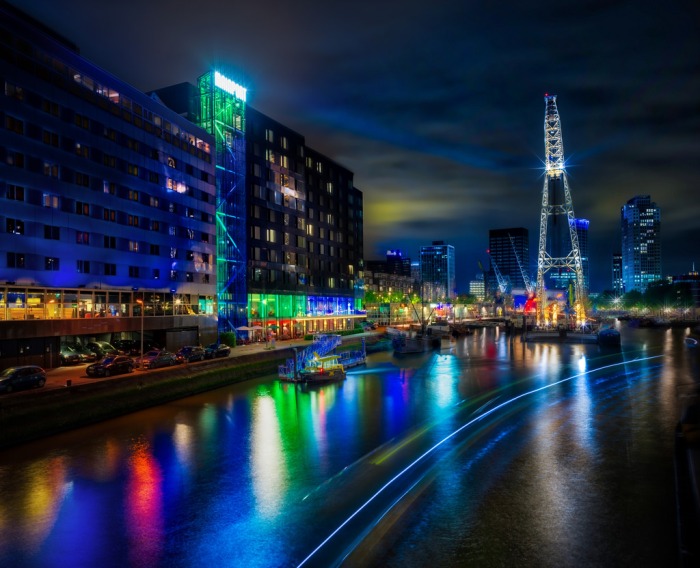Just as we finished 2018, we start 2019 with renewed energy and an interesting agenda of events focused on the port-city relationship. During this year we will certainly have the opportunity to discuss further the future of this relationship during the AIVP days, where we will present the final version of the Agenda 2030 (we will talk about this document in a following post). However, before this, there is another event earlier next month in Valencia, Spain.
New Old Harbours: Reclaiming the public and economic value of historic ports
La Marina de València is a (relative) new organization in charge of regenerating the waterfront of the city, following innovative approaches, engaging with the local population. Besides refurbishing former port buildings, they have also developed an intense event program, including diverse cultural events. They are organizing the conference New Old Harbours: Reclaiming the public and economic value of historic ports to receive new inputs and discuss alternative approaches to waterfront regeneration. In this event we will have the chance to get to know different cases such as Barcelona, Bilbao or Marseilles. The event is free of charge and a good opportunity to meet international experts. The registration can be done using their platform.

For this conference, the organization asked the speakers to reflect on some questions regarding the port-city relationship, starting the debate already. Here come some of my thoughts:
How would you define the port-city relationship?
It is without doubt a complex relationship. Besides being a crucial infrastructure for the national and regional economic development, the port also is also an important element of the of the port city identity, with a significant historical role. In this context, there are conflicting interests from different actors, that often do not speak the same language, and do not know how the other part works. The main actors of this territory – often beyond the waterfront – must work together, to overcome the latent tension and achieve a sustainable port-city relationship.
What are the main challenges for cities in their relationship with historic harbors?
The main challenge is to reintegrate these spaces in urban systems (physical, economic, social and cultural) and attract inhabitants, without depraving them from their original characteristics, nor musealizing them. These spaces are crucial parts of port cities, and key assets to recover the connection with the sea and the maritime world.
What is the linkage between waterfronts and the surrounding urban tissue?
Waterfronts are generally spaces representing the boundary in different levels, e.g. between land and sea, between the maritime and urban “worlds”. Due to this “limit” character, they form a historic, economic social and cultural palimpsest of many layers. The linkage was existed informally until recently, what happened in the port would affect the city and vice-versa. However, today, considering the increasing separation between port and city, the linkage can be better observed in the actors connecting port and city, but also in the broader physical scale, that goes beyond the waterfront. It is necessary to make an effort to keep this link, and reassure that the port presence still is an advantage for the city and not the other way around.
What would you propose to integrate ports in the urban tissue?
Ports are too complex to simply say that they can be an integral part of the urban tissue. However, there are certain activities and sections that could be more easily integrated. This could be possible thanks to new technologies that reduce the negative externalities (e.g. fumes), easing the co-existence. At the same time, it is necessary to find a balance between positive and negative effects that port activities generate, since this balance is often the key of the tension between port and city. It is necessary to experiment with new designs and organizations of that support hybrid spaces between ports and cities. Another important issue is co-constructing new port-city imaginaries, building on citizen participation processes, where the people can speak and recover a sense of belonging of the port, as “their” port.
How do you think the port-city interaction could be improved in terms of urban planning ?
There are no universal solutions. Although ports very often look alike, each one has different issues in the port-city relationship. In any case, we could give general advice in terms of urban planning. For example, it is crucial to open planning processes to the general public, particularly those for the port-city interface. This is the first and main image citizens have with the port (often also the only one). Visual and management transparency is another key issue. Further on, it is also necessary to identify the negative port externalities affecting the local inhabitants, which vary from case to case (e.g. in some cases reducing fumes, in others traffic or acoustic pollution). At the same time, we must find circular economy models, that reuse port generated resources, that otherwise would be wasted, such as heat or energy.
What are the necessary modifications to the legal framework to improve the interaction between historic ports and cities
We need to ask if the main actors with jurisdiction over these territories are legally and technically equipped to handle the challenge of port-city relationship in historical contexts. This interaction requires a certain mentality and sensitivity, something that has not been a main priority for the organizations in charge of managing ports. In many cases we could consider creating specific structures to manage the port-city relationship, either internally in port authorities, or externally, but with their collaboration and involvement in the process.
We will discuss further in Valencia between February 7th and 9th.
Port City Future Conference
The Port City Futures Conference took place in Rotterdam between December 17th and 19th last year. The event was organized by Prof. Carola Hein and Maurice Jansen, rapporteurs of the last AIVP World Conference in Quebec, and is an initiative of the program with the same name from LDE Metropólis and Mainport. The conference gathered leading experts of different fields involved in port-city relationships, connecting academics with stakeholders and institutions, including representatives of port cities of Rotterdam, Naples, Dublin, Riga, Gdansk and Bremen. The goal was to define a new port city research agenda tackling global challenges, such as energy transition, climate change and digitalization, building on concepts such as circular economy, human capital and co-construction governance. In the conference we could see the current initiatives from different actors oriented to improve the port-city relationship in social and environmental terms, but also future strategies of leading ports like Rotterdam. We also got to discuss the key vectors that will defined the future research agenda for port city relationships of leading research centers such as Delft TU or Erasmus University, among others.

Besides the Port City Future conference, the same team led by Prof. Carola Hein recently won an NWO KIEM grant to produce a film exploring the port-city relationship in three port cities, Rotterdam, Naples and Dunkirk. This initiative is connected to the Port City Futures new research agenda and will propose a new approach involving non-professionals audiences to discuss this complex relationship.